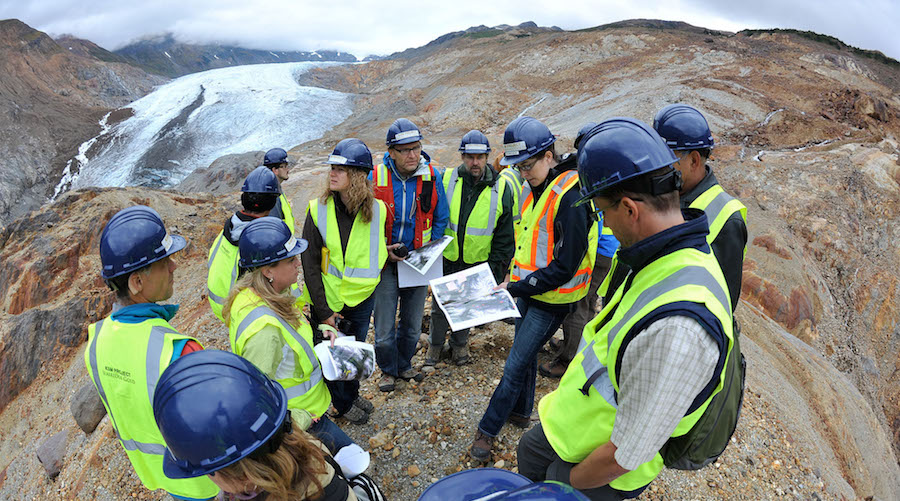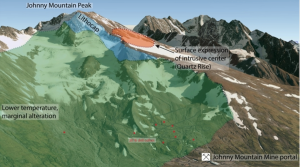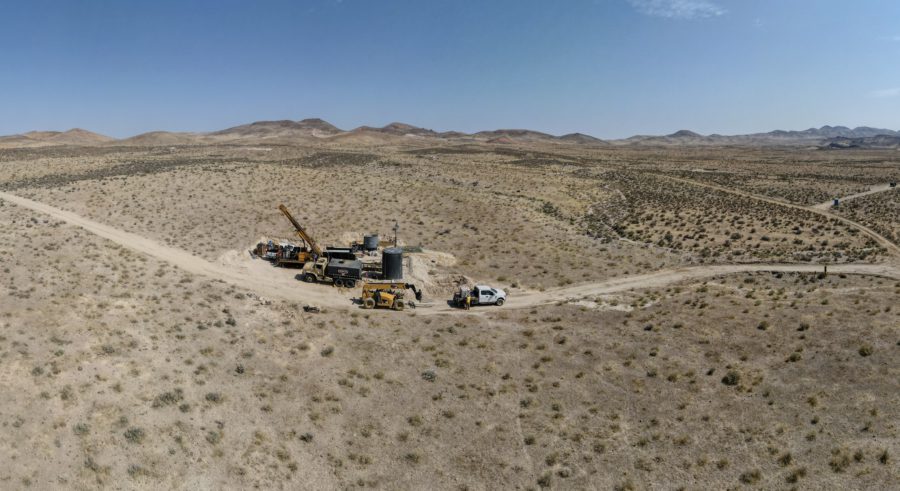Seabridge dealing with damages from previous mining activities in northern BC

The Association of Mineral Exploration in British Columbia recently awarded Seabridge Gold (TSX: SEA)(NYSE:SA) the 2017 Robert R. Hedley Award for excellence in social and environmental responsibility at its KSM project, which the company says is one of the largest undeveloped gold projects in the world measured by reserves.
Inspired by the work at KSM, Brent Murphy, Seabridge Vice President of Environmental Affairs, decided to replicate the experience at Iskut, the firm’s second project in northern BC, which was obtained with the closing of Seabridge’s acquisition of SnipGold Corp. in June 2016. The 29K-hectare property is located some 110 km northwest of Stewart and includes the former high-grade gold Johnny Mountain Mine and the copper-gold Bronson Slope deposit.

Previous to this acquisition and to the consolidation SnipGold carried out from 2005 on, the place had been operated and managed by more than a dozen companies. Thus, as soon as Seabridge bought it, Murphy and his team realized they had a few challenges ahead given the lack of a focused environmentally sustainable development plan.
In other words, the site was abandoned and some infrastructure was left there including a processing plant, an airstrip, 3.5 kilometers of underground workings, an 11.5-hectare flooded tailings impoundment, several small waste rock dumps and several landfills.
“Upon acquisition, we immediately began our remediation work to mitigate the impacts of any historical mining activity at the Bronson Slope Airstrip and Johnny Mountain Mine. We started with a general cleanup of the property, removed significant quantities of hazardous materials from the mine site (i.e. oils, batteries and uncharacterized liquids) and developed extensive aquatic effects monitoring programs which identified that the former mine was not impacting sensitive downstream fish habitat in the Craig and Iskut rivers,” Murphy said in an interview with MINING.com. The Iskut is the largest tributary of the Stikine River, which is considered one of the last truly wild major rivers in the province.
According to the geologist, his team comprised by several contractors and employees from the Tahltan First Nation had to clean out, cut up, dismantle and store 23 fuel tanks, as well as ship unknown chemical bottles, asbestos, and mercury light ballasts to a licensed hazardous waste disposal facility. They also conducted a $1.7-million dam safety review, which indicated the tailings dam at the former Johnny Mountain Mine was stable and in good condition. Still, they decided to install vibrating wire piezometers to continually monitor the dam’s stability.
Understanding the state of the soil and surrounding water resources was also key, Murphy said. Thus, the company implemented a site-wide investigation and sampling program that included the drilling 50 groundwater wells, collection of surface water samples and conducting test pits around the project site.

Although further testing is required, Seabridge found that impacts to groundwater are localized to the immediate vicinity of the former mine site in areas which are in close proximity to the former hydrocarbon fuel storage tanks and the mill building. “A detailed understanding of the quality and level of contamination (if any) assists us in identifying site-specific solutions required to mitigate the environmental impacts highlighted. All of this information ultimately helps us in our future planning to ensure we are developing a solid design,” the company’s exec said.
The reclamation and closure of the old Johnny Mountain Mine site cost the Toronto-based miner some $6 million in 2017. Together with this work, Seabridge is now focusing on exploring the Iskut Project to confirm that there is an economic deposit located at the site, Murphy said.
More News
{{ commodity.name }}
{{ post.title }}
{{ post.date }}



Comments
wags1
If it hasn’t been already, this article needs to be distributed to news sources in Alaska, particularly in southeast Alaska. Here’s a list:
Alaska Daily News – King Salmon.
Alaska Dispatch News – Anchorage.
Daily Sitka Sentinel – Sitka.
Fairbanks Daily News-Miner – Fairbanks.
Juneau Empire – Juneau.
Ketchikan Daily News – Ketchikan.
Kodiak Daily Mirror – Kodiak.
Peninsula Clarion – Kenai
Wrangell Sentinel — Wrangell